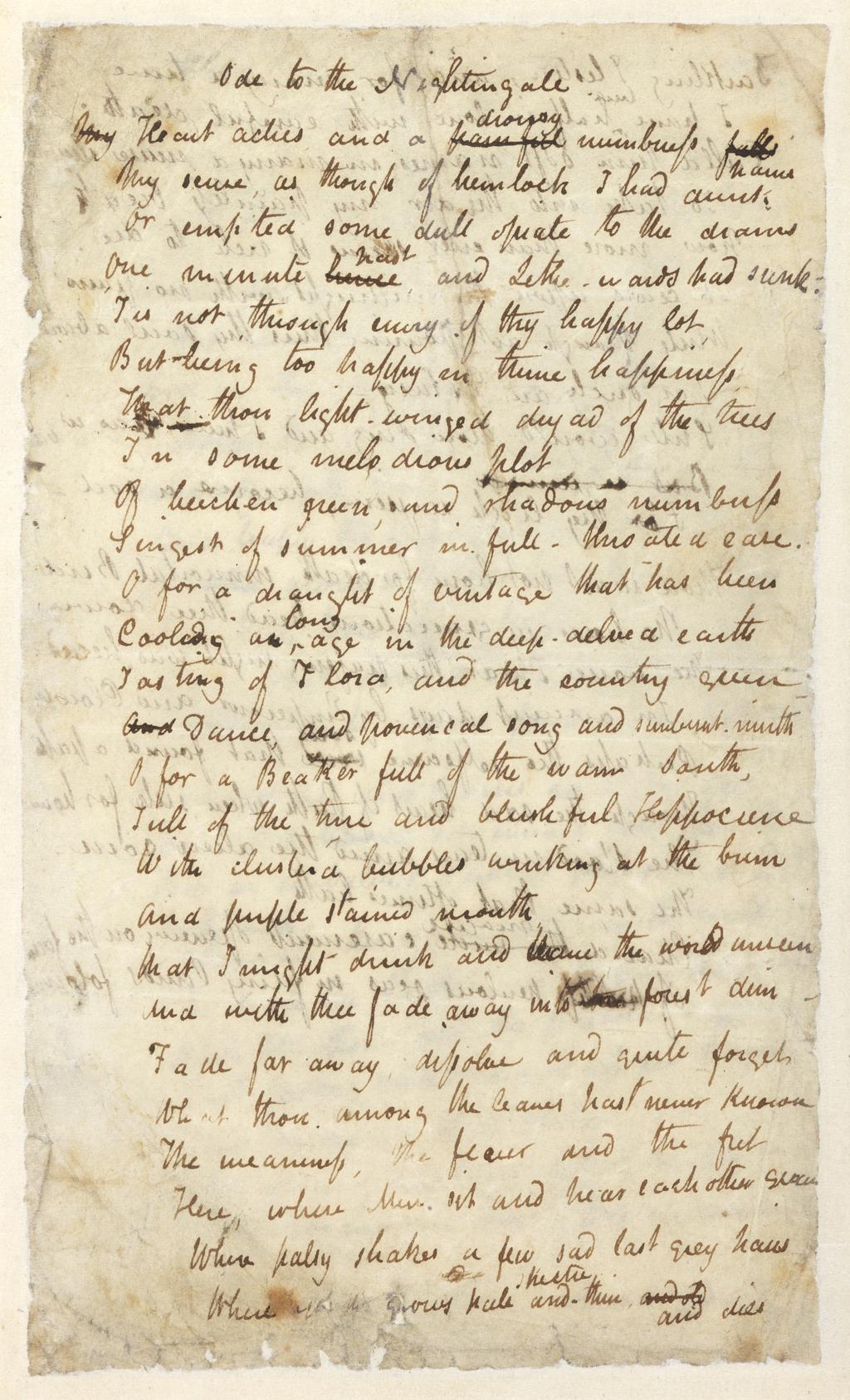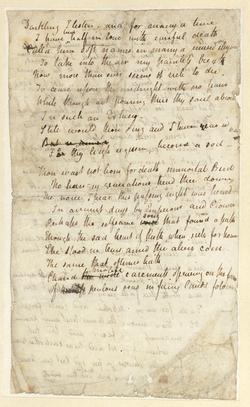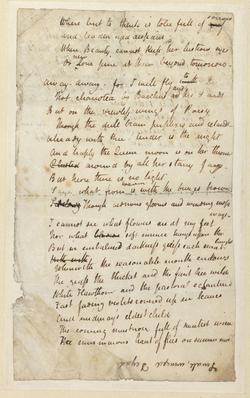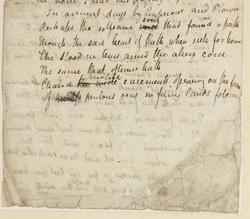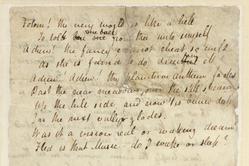Current Location: In storage
Titles
Ode to the Nightingale
Maker(s)
Author:
Keats, John
Conservator:
Cockerell, Sandy
Binder (person):
Cockerell Bindery
Entities
Categories
Description
This manuscript contains the original draft of ‘Ode to a Nightingale’, the only copy in Keats’s own handwriting to survive. The story of its composition is told by Charles Armitage Brown (1787-1842), with whom Keats was living in Wentworth Place, Hampstead in the spring of 1819. Brown’s Life of John Keats - first delivered as a lecture at the Plymouth Athenaeum nearly sixteen years after the poet’s death and not published until 1937 – contains the following memorable account:
‘I observed that every short poem, which he was tempted to compose, was scrawled on the first piece of paper at hand, and that it was afterwards used a mark to a book, or thrust anywhere aside. In the spring of 1819 a nightingale had built her nest near my house. Keats felt a tranquil and continual joy in her song; and one morning he took his chair from breakfast-table to the grass-plot under a plum-tree, where he sat for two or three hours. When he came into the house, I perceived he had some scraps of paper in his hand, and these he was quietly thrusting behind the books. On inquiry, I found those scraps, four or five in number, contained his poetic feeling on the song of our nightingale. The writing was not well legible; and it was difficult to arrange the stanzas on so many scraps. With his assistance I succeeded and this was his Ode to a Nightingale, a poem which has been the delight of everyone. Immediately afterwards I searched for more of his (in reality) fugitive pieces, in which task, at my request, he again assisted me. Thus I rescued that Ode and other valuable short poems, which might otherwise have been lost. From that day, he gave me permission to copy any verses he might write, and I fully availed myself of it. He cared so little for them himself, when once, as it appeared to me, his imagination was released from their influence, that it required a friend at hand to preserve them.’
Scholars have argued about the reliability of Brown’s account, and whether the Fitzwilliam manuscript represents the very first draft or a subsequent reworking. Note that, in line with Brown’s narrative, these two pages have been hastily torn from a notebook – they have damage to edges typical of pages sewn in and subsequently torn out. The order of the stanzas on the pages is also significant. It seems that Keats had grabbed two sheets of paper and began writing on the first page. Working with his customary intense speed and concentration, he did not turn the paper over, but continued on a second sheet. He then ran out of paper, but did not re-enter the house to seek more, but turned instead to the back (verso) of the first sheet, and finally, the verso of the second sheet. These are pages written in the full flood of concentrated inspiration – Keats did not know as he wrote how long the poem was going to be or what the end point was. In other words, they have all the hallmarks of a very first draft.
The text was first published first published anonymously in July 1819 in Annals of the Fine Arts, a short-lived periodical. It was published again with a few changes the following year the collection of Keats’s work, Lamia, Isabella, The Eve of St Agnes and other Poems (London: Taylor and Hessey, 1820). Keats death followed soon after in February 1821.
The manuscript consists of two half sheets of wove paper, the first 204 × 121.5 mm, the second 204.5 × 123 mm. In 1982 these were conserved by Sandy Cockerell and mounted within a wide margin of handmade paper bearing the Cockerell watermark. These were bound in leather with marbled-paper sides.
Production date:
AD 1819
